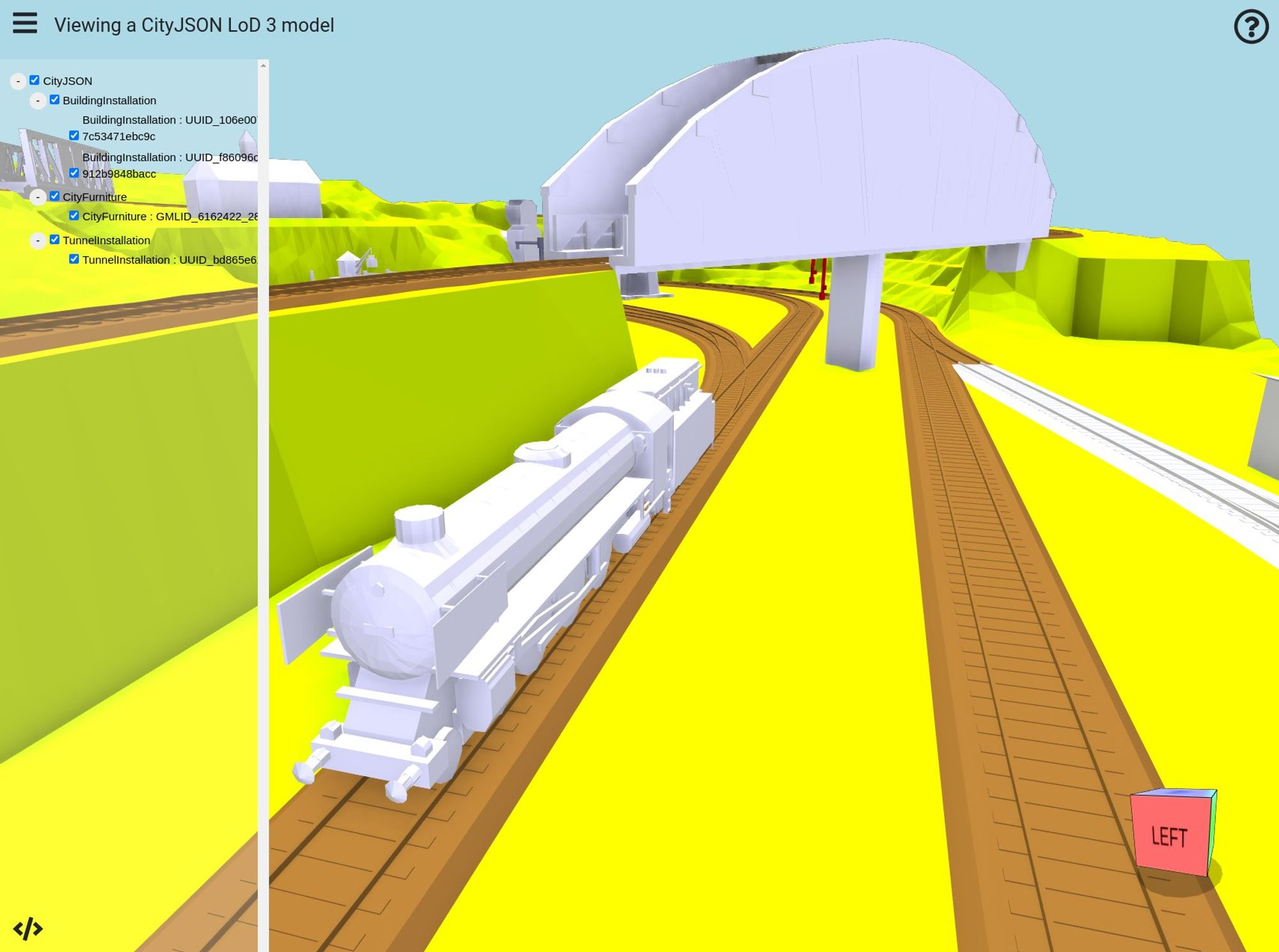Viewing a CityJSON Model with XKTLoaderPlugin
Introduction
In this mini-tutorial, we'll use xeokit's convert2xkt CLI tool to convert a CityJSON model into xeokit's native XKT geometry format, which we'll then view in the browser using a xeokit Viewer.
CityJSON is a JSON-based encoding for a subset of the OGC CityGML data model (version 2.0.0), and is now published as an OGC community standard.
The XKT format compresses models into a compact payload from which xeokit can load large numbers of objects over the Web in seconds, at full geometric precision.
For our CityJSON file, we'll use a LoD-3 model of a railway line, which is one of the sample datasets provided at here. When that's converted and loaded, it will look like the example below.

1. Install convert2xkt
Using git and npm, clone and install our xeokit-convert repository, which contains the convert2xkt tool that we'll use to convert our CityJSON into XKT.
Be sure to use the latest versions of both xeokit-convert and xeokit-sdk.
git clone https://github.com/xeokit/xeokit-convert.git
cd xeokit-convert
npm install
2. Convert CityJSON to XKT
Now convert the CityJSON into an XKT file:
node convert2xkt.js -s LoD3_Railway.json -o LoD3_Railway.json.xkt -l
[convert2xkt] Reading input file: LoD3_Railway.json
[convert2xkt] Input file size: 4521.41 kB
[convert2xkt] Converting...
[convert2xkt] Converting CityJSON 1.0
[convert2xkt] Rotating model about X-axis
[convert2xkt] Converted objects: 120
[convert2xkt] Converted geometries: 36984
[convert2xkt] Converted triangles: 113537
[convert2xkt] Converted vertices: 170281
[convert2xkt] Converted to: XKT v9
[convert2xkt] XKT size: 878.98 kB
[convert2xkt] Compression ratio: 5.14
[convert2xkt] Conversion time: 2.99 s
[convert2xkt] Writing XKT file: LoD3_Railway.json.xkt
Now we have the CityJSON/CityGML model in a compact format that can be loaded quickly into xeokit.
3. View the XKT in the Browser
Finally, let's view our model in the browser using xeokit. We'll create a Viewer attached to an HTML canvas, install an XKTLoaderPlugin, and use that to load our XKT model. Find the full example here.
import {Viewer, XKTLoaderPlugin} from "https://cdn.jsdelivr.net/npm/@xeokit/xeokit-sdk/dist/xeokit-sdk.es.min.js";
const viewer = new Viewer({
canvasId: "myCanvas"
});
viewer.scene.camera.eye = [15.84, 11.17, 15.33];
viewer.scene.camera.look = [7.96, 1.76, 8.46];
viewer.scene.camera.up = [-0.50, 0.74, -0.43];
const xktLoader = new XKTLoaderPlugin(viewer);
const modelNode = xktLoader.load({
id: "myModel",
src: "LoD3_Railway.json.xkt"
});
